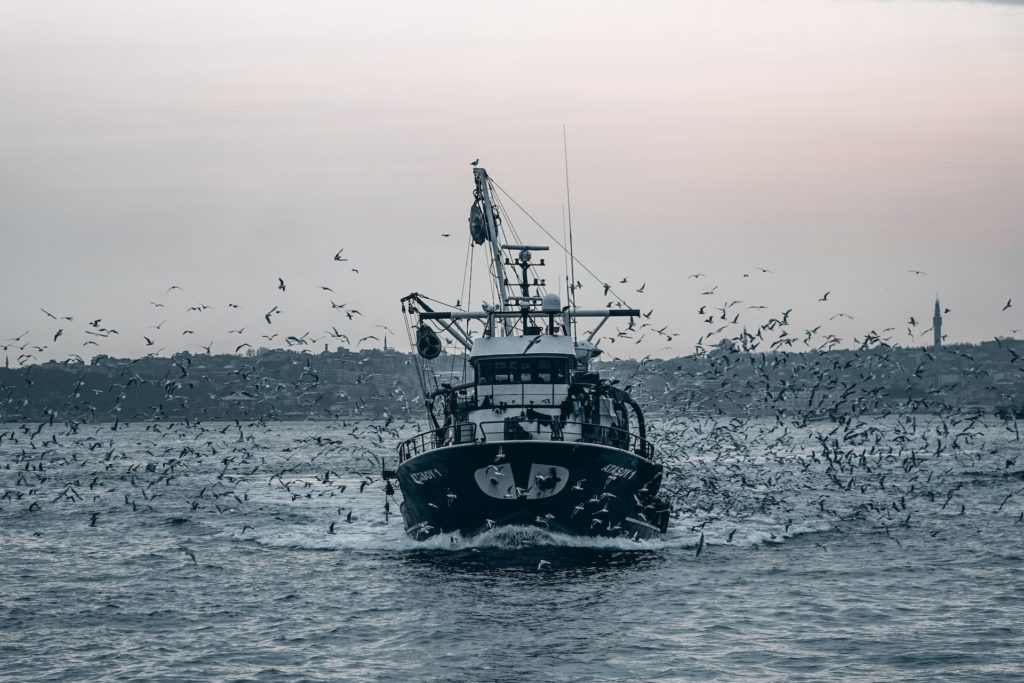An expansion of the world’s largest oxygen minimum zone would further stress commercially important species and ecosystems
29 November 2022

Climate change could cause the Pacific’s low-oxygen zone, already the world’s largest, to grow by up to 8 million cubic kilometers by 2100, according to new research in AGU Advances. | Credit: Aylin Çobanoğlu on Unsplash
AGU press contact:
Liza Lester, +1 (202) 777-7494, [email protected] (UTC-5 hours)
Contact information for the researchers:
Julius J.M. Busecke, Columbia University, [email protected], (UTC-5 hours)
Laure Resplandy, Princeton University, [email protected], (UTC-5 hours)
WASHINGTON — For thousands of kilometers along the western coasts of the Americas, low-oxygen waters known as oxygen minimum zones stretch out into the Pacific. In part due to climate change, this oxygen-starved region is likely to get wider and deeper, expanding by millions of cubic kilometers by the end of the century, models in a new study predict. Larger oxygen minimum zones threaten marine ecosystems and species, along with the industries that depend on them.
Oxygen minimum zones are located 200 to 2000 meters (656 to 6560 feet) beneath the surface, in the “shadow regions” of the tropical ocean, and are driven by factors such as water temperature, nutrient supply and ocean circulation patterns. Predicting how they will respond to climate change has proven difficult and the Pacific oxygen minimum zone, which is the largest in the world, is no exception. Part of the difficulty in predicting changes arises from disagreements on how to define “low” oxygen levels, which the new study explores.
The study was published in the journal AGU Advances, which publishes high-impact, open-access research and commentary across the Earth and space sciences. It used the latest suite of climate models, CMIP6, to improve upon previous predictions for how oxygen minimum zones would change. Those predictions often reported conflicting fates of the Pacific’s oxygen minimum zone.
Oxygen minimum zones comprise an outer layer and an inner core of ultra oxygen-depleted water. If high greenhouse gas emissions continue, the study predicted the tropical Pacific oxygen minimum zone will grow 6 to 8 million cubic kilometers (1.4 to 1.9 million cubic miles) by 2100, expanding about 4%. That volume equates to about 0.6% of the volume of the world’s oceans, or about 3 times the volume of the Greenland ice sheet.
As the Pacific zone grows, its outer layer will stretch over greater areas and depths, but its inner core could shrink, the study found.
The growth of the oxygen minimum zone outer layer is due to weakened ocean circulation, which slows oxygen replenishment, according to the models. Over much of its area, the oxygen minimum zone will likely expand toward the surface by 5 to 50 meters (16 to 160 feet).
There’s a small upside to this: The core in oxygen minimum zones produce nitrous oxide, an important greenhouse gas, so a shrinking core in the tropical Pacific oxygen minimum zone may limit how much gas is released into the atmosphere.
“I think not having that core region balloon out is probably good news,” said Julius Busecke, lead study author and a physical oceanographer at Columbia University. Having a smaller core also poses a smaller threat to fish and other organisms that need oxygen to survive.
Beyond the core, the expansion of the Pacific oxygen minimum zone’s outer layer will compress the habitat for commercially important marine species, such as anchovies, tuna and crabs. “As the levels of oxygen go down, these species won’t be able to feed, swim and reproduce unless they relocate to ocean regions with enough oxygen for them to breathe properly,” said Laure Resplandy, a co-author of the study and biogeochemical oceanographer at Princeton University.
Expanding oxygen minimum zones may lead to more overfishing because low-oxygen zones will likely expand upward toward the ocean’s surface, compacting oxygen-rich regions where fish can live, said Busecke. This could negatively affect the economically important fishery industry of the region.
###
Contributed by Aara’L Yarber
###
AGU (www.agu.org) is a global community supporting more than half a million advocates and professionals in Earth and space sciences. Through broad and inclusive partnerships, we advance discovery and solution science that accelerate knowledge and create solutions that are ethical, unbiased and respectful of communities and their values. Our programs include serving as a scholarly publisher, convening virtual and in-person events and providing career support. We live our values in everything we do, such as our net zero energy renovated building in Washington, D.C. and our Ethics and Equity Center, which fosters a diverse and inclusive geoscience community to ensure responsible conduct.
Notes for Journalists:
AGU Advances is an open access. Download a PDF copy of the paper here. Neither the paper nor this press release is under embargo.
Paper title:
“Diverging fates of the Pacific Oxygen minimum zone and its core in a warming world”
Authors:
- Julius J.M. Busecke (corresponding author), Lamont-Doherty Earth Observatory, Columbia University, New York, NY, USA
- Laure Resplandy, Department of Geosciences, High Meadows Environmental Institute, Princeton University, Princeton, NJ, USA
- Sam J. Ditkovsky, Program in Atmospheric and Ocaenic Sciences, Princeton University, Princeton, NJ, USA
- Jasmin G. John, NOAA/OAR/Atlantic Oceanographic and Meteorological Laboratory, Miami, FL, USA